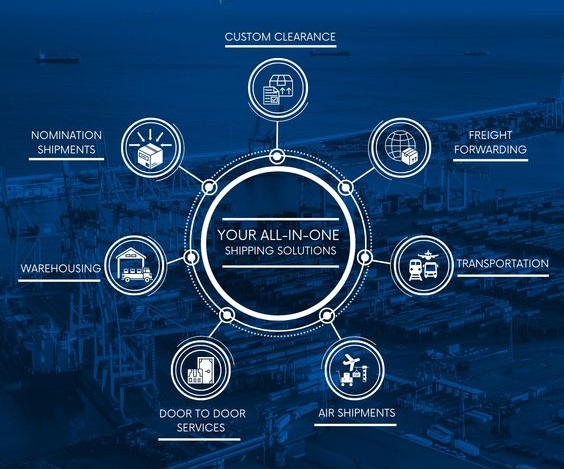Introduction
Navigating the seas of international trade can be a complex undertaking. One crucial aspect of this journey is customs clearance. Customs clearance refers to the procedures involved in getting permission to import or export goods from one country to another. It’s an essential part of ensuring smooth movement of goods across borders, complying with legal requirements, avoiding penalties, and minimizing delays.
Importance of Customs Clearance
Customs clearance plays a pivotal role in international trade. It ensures that the goods entering or leaving a country comply with all the necessary regulations, including safety standards and quotas. The inability to clear customs can result in fines, penalties, or even seizure of goods. This makes understanding and correctly executing the customs clearance process critical for businesses involved in international trade.
Steps Involved in Customs Clearance
1. Documentation Preparation
To facilitate customs clearance, specific documentation must be prepared and submitted. These include:
- Bill of Lading: A document issued by a carrier to acknowledge receipt of cargo for shipment.
- Harmonized System (HS) Code: An internationally standardized system of names and numbers to classify traded products.
- Customs Duty: The tax imposed on goods when they are transported across international borders.
- Import/Export License: A document issued by the government authorizing the import/export of goods.
- Certificate of Origin: A document that certifies the country in which a commodity or good was manufactured.
- Other documents like proof of insurance, invoice, packing list, air waybill, inland bill of lading, through bill of lading, ocean bill of lading, pre-shipment inspection certificate, transportation invoice, and port spending (when applicable).
2. Customs Declaration
Once the necessary documents are prepared, a customs declaration should be submitted to the customs authorities. This document provides details about the goods being imported or exported, their value, origin, and destination. The customs authorities then verify this information.
3. Customs Examination
If necessary, goods may be subjected to physical inspection to verify their compliance with regulations and standards. This can include checking for prohibited items or verifying the accuracy of the declared value.
4. Payment of Customs Duties and Taxes
Once the declaration is verified and the goods are inspected, the customs duties and taxes must be calculated and paid. It’s important to note that Free Trade Agreements (FTAs) can significantly impact the amount of these duties and taxes.
Common Challenges and Solutions
Though the customs clearance process might seem straightforward, it can present a set of challenges. Here are some common issues and how to overcome them:
- Delays in documentation processing: Ensure all documents are prepared accurately and submitted in a timely manner.
- Customs valuation disputes: Engage a customs broker to help negotiate fair and accurate valuations.
- Non-compliance with regulations: Stay updated on the latest regulations and standards to avoid non-compliance.
Case Study: Challenging Customs Clearance Scenario
To illustrate the complexities and solutions in customs clearance, consider this scenario: A small business was importing a shipment of clothing from Italy to the United States. However, they misclassified their goods under the wrong HS code, leading to a delay at customs. Upon engaging a customs broker, they were able to correct the classification, ensuring the goods cleared customs promptly and without additional fines.
Conclusion
Navigating the intricacies of customs clearance is no small feat. It requires an understanding of complex regulations, meticulous preparation of documents, and engagement with customs authorities. However, with the right knowledge and resources, businesses can effectively manage this process, ensuring their goods move smoothly across borders. Remember, successful customs clearance is a key step towards successful international trade.
FAQS
Here are some frequently asked questions about customs clearance.
SHOULD I USE A CUSTOMS BROKER?
The law doesn’t require you to use a customs broker to clear your merchandise. Customs brokers must hold a license from U.S. Customs and Border Protection to represent importers in CBP transactions. You can work with either an independent customs broker or customs brokerage firm.
HOW LONG DOES CUSTOMS CLEARANCE USUALLY TAKE TO COMPLETE?
On average, a customs clearance takes less than 24 hours to complete. However, the inspection process can take several days or weeks, depending on the number and type of imported products. Therefore, it is essential to plan and allow for additional time if necessary.
CAN A SHIPMENT BE HELD AFTER PASSING CUSTOMS CLEARANCE?
Yes, a shipment can be held by Customs even after it has passed clearance if the documentation contains mistakes or is missing critical information. This can cause delays in getting your shipment delivered, so it’s essential to ensure the necessary documentation is in order before submitting it to customs.
DO I NEED TO PAY IMPORT DUTIES WHEN EXPORTING GOODS?
You need to pay import duties if you’re exporting goods from the United States. The amount of duty you need to pay on such merchandise depends on the type of goods you’re shipping and the country you’re exporting them to. You can find more information on import duties by contacting your local customs office.

